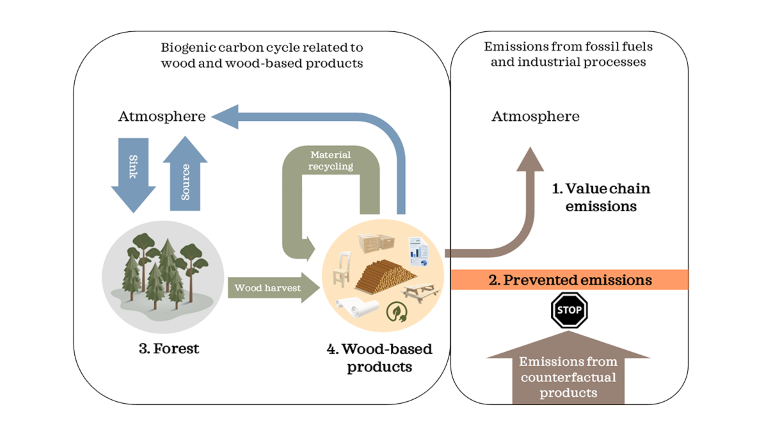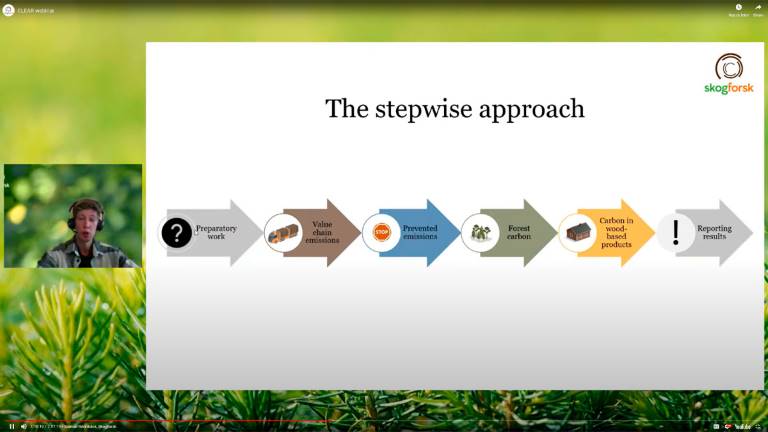CLEAR – CLimate Effect Assessment and Reporting

The assessment of climate effects with CLEAR (CLimate Effect Assessment and reporting) is focused on the wood-based products that are put on the market by the corporation. The model is based on the two principal climate change mitigation objectives stipulated by the United Nations Framework Convention on Climate Change (UNFCCC):
- To control, reduce and prevent greenhouse gas emissions in all sectors.
- To conserve and enhance sinks and reservoirs of all greenhouse gases.
CLEAR includes four components that together provide a more complete picture of the corporation’s climate effect regarding wood and wood-based products in relation to these two goals. Each component builds on established methodologies/standards that each represent a long history of climate-related reporting. The novelty here is to assemble the four components into a more complete climate effect assessment.

- Value chain emissions
Value chain emissions are assessed for producing and placing wood-based products on the market, including recycling and final use. The measurements are conducted according to the principles of the GHG-protocol. - Prevented emissions
Greenhouse gas emissions avoided as a result of the use of wood-based products instead of more climate-intensive products are calculated. The assessment relies on data obtained from Life Cycle Assessments and similar studies. - Changes of carbon stored in forests
Here, changes in the carbon stock in the forest where wood was taken to produce the wood-based products is assessed. This is assessed according to the "IPCC Guidelines for National Greenhouse Gas Inventories" framework. - Changes of carbon stored in wood-based products (HWP)
Changes in the carbon stock in wood-based products in use in society is assessed. These assessments are also based on the "IPCC Guidelines for National Greenhouse Gas Inventories" framework.
The administration of CLEAR is led by Skogforsk in collaboration with the following parties, several of which today use the model to calculate their own organization's climate effect.




